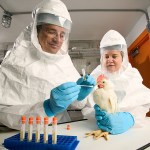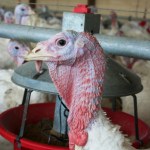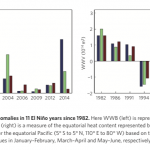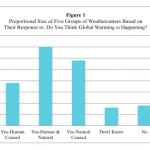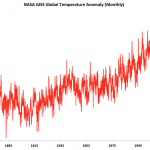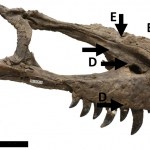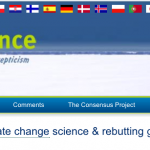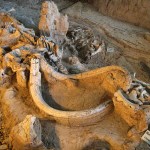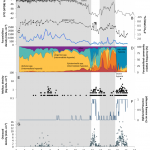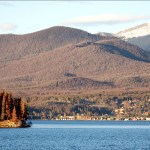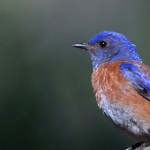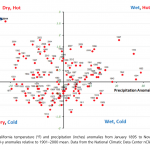
What is H5N2 Avian Influenza?
H5N2 is a bird influenza virus that is making news. This mainly affects domestic fowl, and in this sense is not a topic central to 10,000 Birds. But, wild birds are part of the story, and the virus itself has changed and has been known to make wild birds ill. And, of course, the reputation of certain species of birds as troublemakers for humans is a problem in bird conservation, so this is worth watching. Here I have a quick summary which I’m afraid lacks a lot of information that we’d like to have but just don’t....
Please click through to read my latest post…
Unless you are living in a chicken coop, you have probably heard about the Turkey Crisis in Minnesota and surrounding upper plains/midwestern states. Every few days we hear more news: Millions of farmed turkeys are being put down in one turkey farm after another, because the farm's turkeys are infested with the H5N2 bird flu.
I should say right away, that according to the Minnesota Turkey Growers Association, there is no significant risk of a turkey shortage. While it is always bad to count your chickens before they hatch, apparently this is not a big problem with the larger fowl.
See also…
The American Biology Teacher has hosted a guest editorial by Glenn Branch and Minda Berbeco of the NCSE. The editorial points out that climate science is under a similar sort of anti-science attack as evolution has been for years, though generally with different (less religious) motivations. Also noted is the problem of fitting climate change into the curriculum, especially in biology classes. Indeed, biology teachers are already having a hard time getting the standard fare on the plate. In recent years, for example, the AP biology curriculum has jettisoned almost everything about plants…
A new study seems to provide a better way to categorize El Nino climate events, and offers an explanation for how different kinds of El Nino events emerge.
El Nino is part of a large scale, very important climate phenomenon in the Pacific Ocean, generally referred to as the El Nino Southern Oscillation (ENSO). Over time (years) wind and water currents move heat into the upper levels of the Equatorial Pacific (La Nina). Then, over time (months) the heat comes back out – that is an El Nino. The effects can be dramatic. During El Nino years, trade winds and monsoons may behave differently than…
There was a time when I picked which local TV news station to watch based on the way the TV meteorologist addressed global warming. There were two stations in the running. One of them had a guy who frequently disparaged climate science, and the other had Paul Douglas, who no longer does TV meteorology (I no longer watch local TV news) but who has become a major spokesperson for reason and science (see: Paul Douglas on Climate Change and A Q&A with Paul Douglas, the evangelical Christian Republican poster boy for climate change). Paul and I have become colleagues and friends.
In 2011,…
The last 12 months have been the warmest one year period in the NASA database since records began in 1880. According to the just released NASA GISS Global Temperature Data, March, 2015 is estimated to have been the fifth warmest month on record. Here are the top 20 months in rank order:
2007JAN93
2002MAR88
2010MAR87
1998FEB86
2015MAR84
2010APR82
2014SEP81
2015FEB78
2014MAY78
2014OCT77
2005OCT76
2015JAN75
2013NOV75
2010NOV75
1998JUN75
1995FEB75
2010FEB74
2006DEC74
2014DEC73
2014AUG73
Here is the monthly data covering the entire period of the instrumental record (1880 - present)
And, most…
The number one rule of the Taphonomy Club is don't talk about marks on bones ... without placing them in context. Many marks on bones could have multiple causes, such as putative cut marks caused by stone tools on animal bones found on early hominid sites. In that case, hard sharp stony objects in the ground can cause marks that are hard to tell apart from stone tool marks. But when you find almost all the possible stone tool marks in the exact locations they would be if a hominid was butchering or defleshing the animal, then you can assert that that butchery or defleshing with stone tools…
The site, not the thing. From the YouTube site:
Everyone at Skeptical Science spends a lot of their time reading the scientific literature and listening to experts. Without that we wouldn't be able to write all the material that's published on Skeptical Science. It's a lot of work, especially when you do this with a critical eye. Our goal, after all, is to ensure that what we write reflects the scientific literature on the subject as accurately as possible.
The materials created by Skeptical Science are used by teachers, politicians, and of course by users on the internet to rebut climate…
According to the best available research, we are going to have to double food supplies, globally, by 2050. Think about that for a moment. Children born today will be in their 40s at a time that we need to have already doubled food production, yet during the last 20 years we have seen only a 20 percent increase in food supply. Assuming a steady rate of increase in production (which might be optimistic) we should expect to fall far short of demand over the next few decades. This is a problem. The problem is expected to most severely affect poorer people, people in less developed nations, and…
Much is being made of Brontosaurus. Brontosaurus is a genus name for a large dinosaur, known to watchers of “Land Before Time” as “Long-Necks.” That generic name dates to the 19th century, but in the early 20th century it was eliminated as a proper Linnaean term and replaced with Apatosaurus. This made us sad. Most people discover dinosaurs and learn all about a select handful of the iconic ones, including Brontosaurus, then later learn that Brontosaurs is a bogus name. And become sad.
But perhaps this sadness is all for naught, because a very recent study seems to require the resurrection…
I got a press release about the Waco Mammoth Site that I thought I'd pass on to you:
National Park Service Director Jarvis Participates in Public Meeting about Waco Mammoth Site
WACO, TX – Today, National Park Service Director Jonathan B. Jarvis heard from the citizens of Waco regarding the community’s vision to preserve, protect and enhance the Waco Mammoth Site.
At the invitation of officials from the City of Waco and Baylor University, Jarvis joined the meeting that included significant attendance from local community members and supporters of the site who are interested in protecting the…
Maybe, maybe not. There is a new paper that looks at what climate scientists call “synoptic midlatitude temperature variability” and the rest of us call “cold snaps” and “heat waves.” The term “synoptic” simply means over a reasonably large area like you might expect a cold snap or heat wave to be. Specifically, the paper (Physics of Changes in Synoptic Midlatitude Temperature Variability, by Tapio Schneider, Tobias Bischoff and Hanna Plotka, published in Journal of Climate) concludes that as human-caused greenhouse gas pollution increases, the frequency of cold snaps in the northern…
A new study by Sarah Moffitt, Tessa Hill, Peter Roopnarine, and James Kennett (Response of seafloor ecosystems to abrubt global climate change) gets a handle on the effects of relatively rapid warming and associated Oxygen loss in the sea on invertebrate communities. The study looked at a recent warming event (the end of the last glacial) in order to understand the present warming event, which is the result of human-caused greenhouse gas pollution.
Here is what is unique about the study. A 30 foot deep core representing the time period from 3,400 to 16,100 year ago, was raised from a site in…
There is some interesting new work carried out by researchers at Dartmouth College and the USDA Forest Service on the relationship between the Mountain Pine Beetle, major die-offs of forests in North America, and climate change.
The Mountain Pine Beetle (Dendroctonus ponderosae) is a kind of “bark beetle” (they don’t bark, they live in bark) native to western North America. They inhabit a very wide range of habitats and are found from British Columbia all the way south to Mexico. In British Columbia alone, the pine beetle, though a fairly complex process, has managed to destroy 16 of 55…
Let me start off by saying something you may not know. The big corporations and the 1%ers you have learned to hate fund many of the projects you've learned to love. I have not checked lately, but Murdoch and FOX corporation for several years in a row funded at a 50% or 60% level virtually all of the National Geographic specials produced. Major museums known for their great exhibits are often funded by the very corporations or individuals that the people who love those exhibits are (often justifiably) suspicious of. The great importance of private corporate or individual funding is also a…
Antarctica is pretty much covered with glaciers. Glaciers are dynamic entities that, unless they are in full melt, tend to grow near their thickest parts (that's why those are the thickest parts) and mush outwards towards the edges, where the liminal areas either melt (usually seasonally) in situ or drop off into the sea.
Antarctic's glaciers are surrounded by a number of floating ice shelves. The ice shelves are really the distal reaches of the moving glaciers floating over the ocean. This is one of the places, probably the place at present, where melting accelerated by human caused…
There is a letter signed by top scientists demanding that science museums cut all their ties to Big Fossil, and where appropriate, kick the Koch Brothers off their boards.
The letter says, in part,
As members of the scientific community we devote our lives to understanding the world, and sharing this understanding with the public. We are deeply concerned by the links between museums of science and natural history with those who profit from fossil fuels or fund lobby groups that misrepresent climate science.
Museums are trusted sources of scientific information, some of our most important…
The podcast for my interview with Anastasia Bodnar is now available HERE. There are also a couple of links there that you might find of interest.
We focuses on the actual process and science of GMOs and spent very little time on the usual issues. I hope many of you find the interview different and refreshing. Total change of pace from the usual yammering, or at least, that was my intent. Also, for those of you who heard the first interview, I assure you, this time the sound quality is excellent!
Enjoy.
This is one of those great examples of research you can probably use in an advanced biology classroom (high school) or intro college bio pretty effectively. It includes birds. It includes hormones. It includes evolution. What else is there, really?
I did a very brief writeup on it here, and you can get the original paper which is very straight forward and readable.
The bottom line: Females in one species of bird manage to figure out that under certain, occasional conditions if they produce really obnoxious and overbearing sons, those sons will do well. So they do. There is a phylogenetic…
A paper just out now in PNAS by Noah Diffenbaugh, Daniel Swain, and Danielle Touma shows that "Anthropogenic warming has increased drought risk in California." From the abstract:
... We find that although there has not been a substantial change in the probability of either negative or moderately negative precipitation anomalies in recent decades, the occurrence of drought years has been greater in the past two decades than in the preceding century. In addition, the probability that precipitation deficits co-occur with warm conditions and the probability that precipitation deficits produce…
